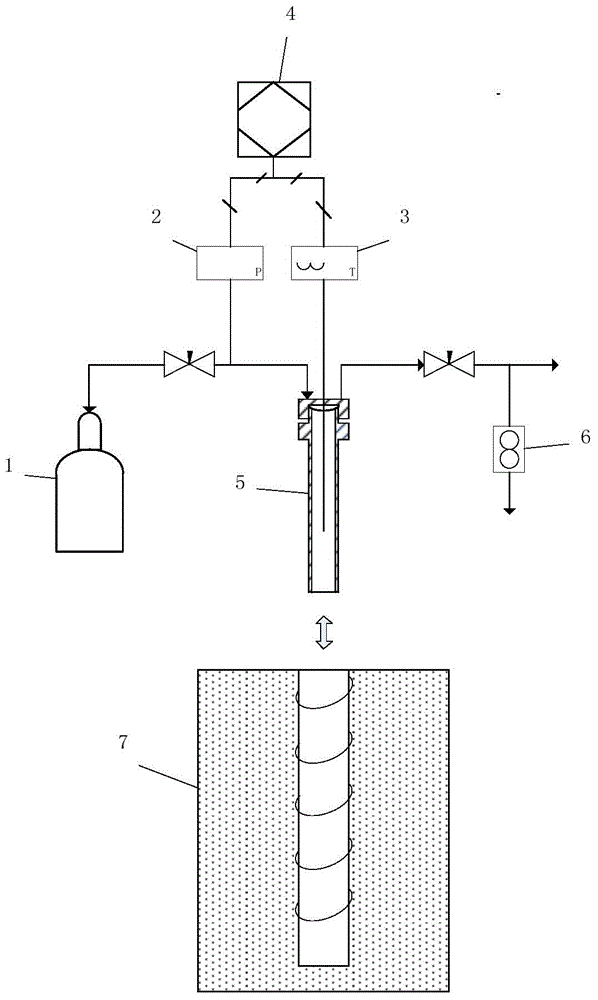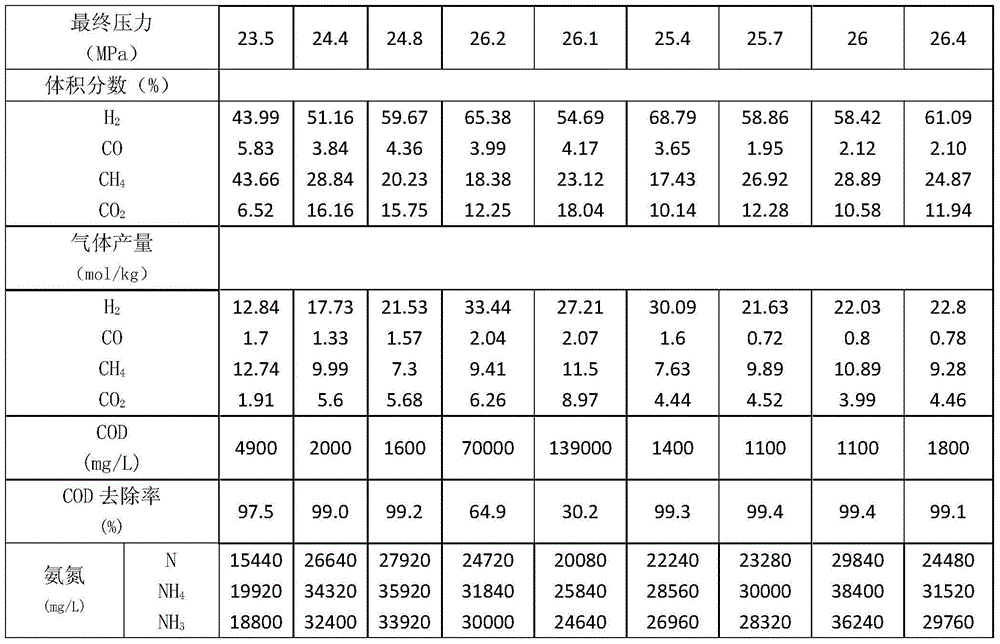Method for gasifying unsymmetrical dimethylhydrazine waste liquor through supercritical water
A technology of supercritical water gasification and unsymmetrical dimethyl hydrazine, applied in chemical instruments and methods, water pollutants, water/sewage treatment, etc., can solve the problems of secondary pollution, high toxicity, etc. The effect of large processing capacity and low operating cost
- Summary
- Abstract
- Description
- Claims
- Application Information
AI Technical Summary
Problems solved by technology
Method used
Image
Examples
Embodiment 1
[0036] Example 1 Utilize Ru / C and skeleton nickel in supercritical water to make catalyst gasification unsymmetrical dimethylhydrazine
[0037]In the catalytic gasification experiment of unsymmetrical dimethylhydrazine, the following three catalysts with better catalytic gasification results under supercritical water conditions were selected: carbon-supported ruthenium (Ru / C), Raney nickel 3110 (RTH3110) , Raney Nickel 4110 (RTH4110). It can be seen from Table 1-1 that when no catalyst is added, as the temperature increases from 550°C to 600°C, H 2 The mole fraction of CH gradually increased, CH 4 The mole fraction of gradually decreases, when the catalyst is added, compared with no catalyst, the H 2 The mole fraction of H has been significantly increased. As the temperature increases from 550°C to 600°C, H 2 The mole fraction of CH gradually decreases, CH 4 The mole fraction of the gradually increased. h 2 and CH 4 The output of the same law with the increase of temper...
Embodiment 2
[0042] The impact of different oxidant concentrations in embodiment 2 supercritical water on degrading unsymmetrical dimethylhydrazine
[0043] In the partial oxidation gasification experiment of unsymmetrical dimethylhydrazine, the selected oxidant is H 2 o 2 . It can be seen from Table 1-2 that when no oxidant is added, as the temperature increases from 500°C to 600°C, H 2 The mole fraction of CH gradually increased, CH 4 The mole fraction of H gradually decreases, and as the amount of oxidant increases, H 2 and CH 4 The mole fraction and yield of CO gradually decrease, while the CO 2 The mole fraction and yield gradually increased.
[0044] In terms of COD removal rate, as the amount of oxidant increases, its COD removal rate increases gradually, all above 99%, and its ammonia nitrogen content gradually decreases with the addition of oxidant.
[0045] Table 1-2 Partial oxidation treatment results of unsymmetrical dimethylhydrazine
[0046] (material quality (unsymme...
PUM
 Login to View More
Login to View More Abstract
Description
Claims
Application Information
 Login to View More
Login to View More - R&D
- Intellectual Property
- Life Sciences
- Materials
- Tech Scout
- Unparalleled Data Quality
- Higher Quality Content
- 60% Fewer Hallucinations
Browse by: Latest US Patents, China's latest patents, Technical Efficacy Thesaurus, Application Domain, Technology Topic, Popular Technical Reports.
© 2025 PatSnap. All rights reserved.Legal|Privacy policy|Modern Slavery Act Transparency Statement|Sitemap|About US| Contact US: help@patsnap.com



